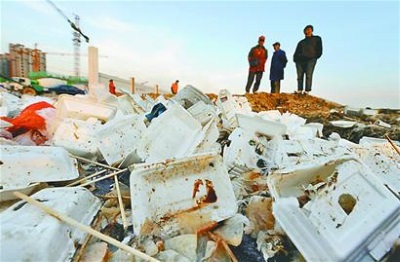 PHILIPSBURG:--- Nature Foundation encourages the community to stop using Styrofoam containers, cups, and other Styrofoam food packaging. Styrofoam has become widely accepted as an everyday product for food packaging and insulating food and beverages from heat or cold. However, many people do not realize that it is made from polystyrene, a petroleum-based plastic made of highly toxic substances that are non-sustainable and heavily polluting. Styrofoam is non-biodegradable, meaning it can last in the environment forever. Due to its lightweight nature, floatability, and likelihood to be blown from disposal sites, Styrofoam commonly ends up along coastlines and waterways around the world. Especially in St Maarten, considering the exposure, maintenance, and location of the landfill, Styrofoam easily ends up in our waters and ocean. Styrofoam is found to be the second most abundant form of beach debris according to a study, also the Nature Foundation found Styrofoam to be the most littered item during cleanups in the water and on the beach.
PHILIPSBURG:--- Nature Foundation encourages the community to stop using Styrofoam containers, cups, and other Styrofoam food packaging. Styrofoam has become widely accepted as an everyday product for food packaging and insulating food and beverages from heat or cold. However, many people do not realize that it is made from polystyrene, a petroleum-based plastic made of highly toxic substances that are non-sustainable and heavily polluting. Styrofoam is non-biodegradable, meaning it can last in the environment forever. Due to its lightweight nature, floatability, and likelihood to be blown from disposal sites, Styrofoam commonly ends up along coastlines and waterways around the world. Especially in St Maarten, considering the exposure, maintenance, and location of the landfill, Styrofoam easily ends up in our waters and ocean. Styrofoam is found to be the second most abundant form of beach debris according to a study, also the Nature Foundation found Styrofoam to be the most littered item during cleanups in the water and on the beach.
As it makes its way towards the ocean and floats in the ocean, Styrofoam breaks down into smaller and smaller pieces that can be ingested by marine life and other wildlife. Styrofoam can easily harm or kill animals due to toxins or by blocking their stomachs leading to starvation. Many scientific studies have reported on marine species, including most seabirds, to have eaten Styrofoam, other plastics and marine litter. When fish eat Styrofoam, the toxic materials are absorbed into their tissues permanently. Thus, when bigger animals eat those fish and so on, these toxic chemicals bioaccumulate up the food chain, causing larger animals to have very high concentrations of these chemicals in their tissues. This is hazardous to people who consume seafood.
Bioaccumulation is not the only way Styrofoam can end up in our bodies. In fact, it is the least of our worries compared to the harmful effects of using Styrofoam food containers and cups. As mentioned before, Styrofoam contains toxic substances such as Styrene and Benzene. These substances are suspected carcinogens and neurotoxins that are very harmful to humans. Hot foods and liquids start a partial breakdown of the Styrofoam, causing these toxins to leach into the food or drink and be absorbed into our bloodstream and tissue. This risk is even greater with acidic or oily foods and alcoholic beverages. Red wine instantly dissolves Styrene. Avoid drinking tea with lemon, coffee with dairy cream, and fruit juices from Styrofoam cups.
The Nature Foundation advises to follow the warning from the Canadian Food Inspection Agency against microwaving Styrofoam and other plastics: “Remove food from plastic wraps, freezer cartons, and/or Styrofoam trays before defrosting and cooking. They are not heating stable and could leak hazardous compounds from the container or plastic wrap to the food.” Besides, do not burn your plastics, as burning Styrofoam containers with your other garbage releases Carbon Monoxide into the environment, which can be dangerous if inhaled.
Islands all around us and countries and cities around the world have banned or announced to ban Styrofoam food packaging as a result of the negative impacts to humans and the environment. The Nature Foundation St Maarten recommends using safe and reusable food and beverage containers to avoid serious health risks and environmental pollution, which are also biodegradable and compostable products instead of Styrofoam and single-use plastic products.









